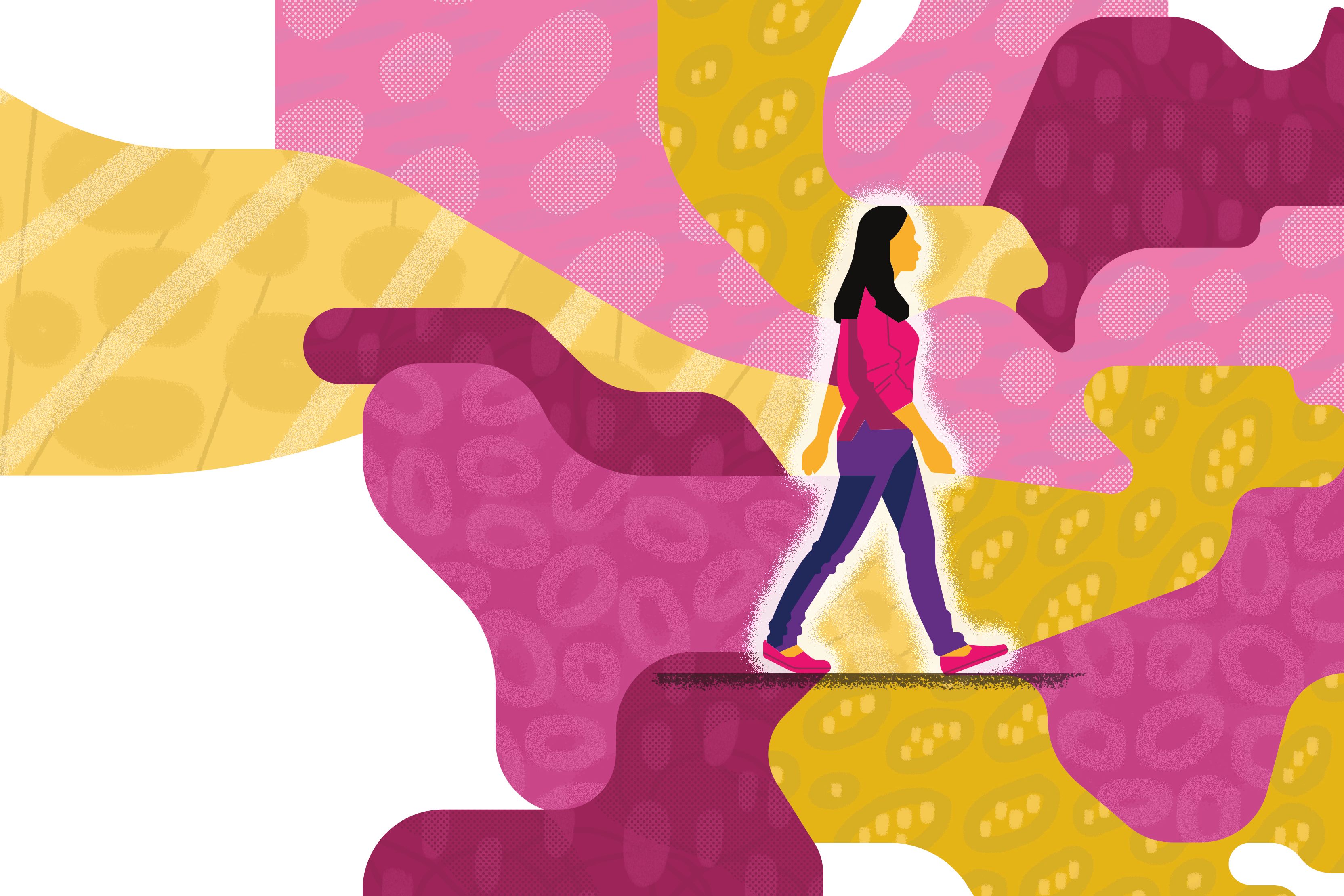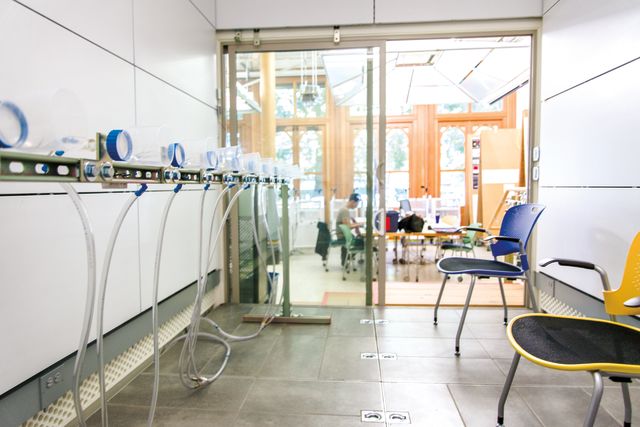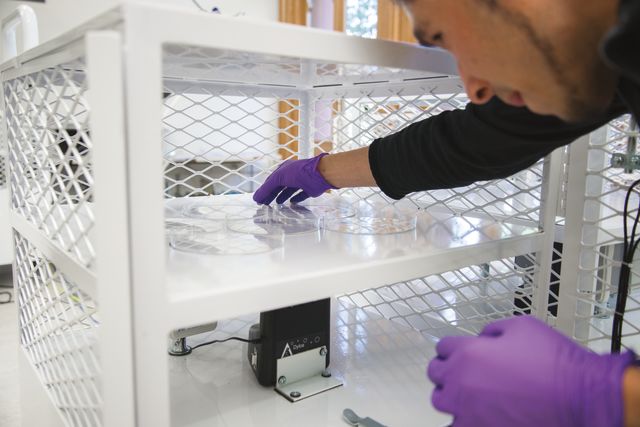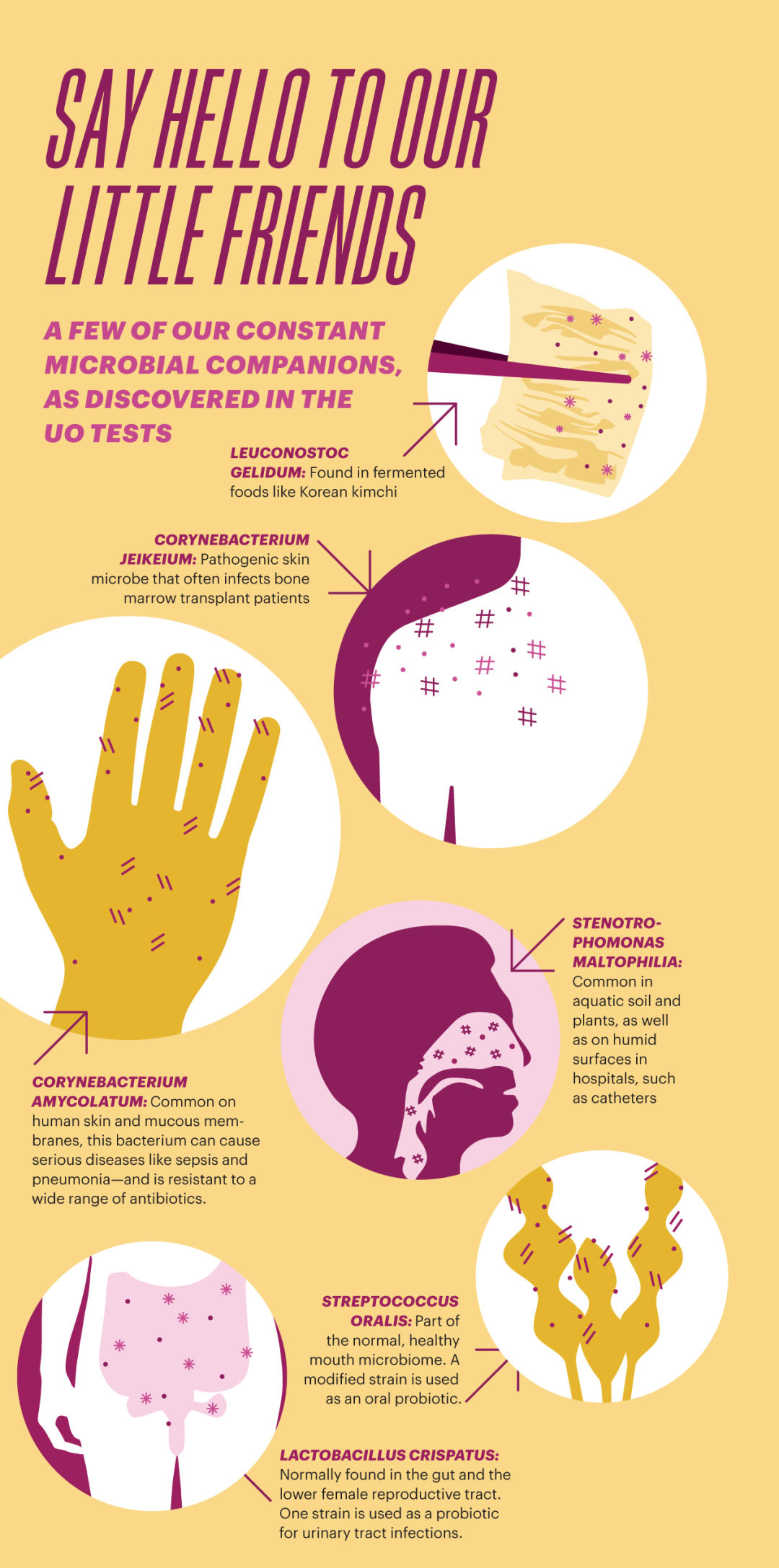
Right Now, You’re Breathing Out Microscopic Ecosystems That Can Tell Scientists Exactly Who You Are
A person sits in a small sealed room, surrounded by white walls and large windows, wearing a tank top and shorts, tapping on a laptop. A rack of a dozen air filters sits along one wall of this climate-controlled chamber.
The stillness of this scene, at the University of Oregon’s Energy Studies in Buildings Laboratory in the century-old White Stag building in Portland’s Old Town, is deceptive. In reality, you could say the very air is alive, because every human is host to a microscopic ecosystem: something like 100 trillion bacteria, viruses, and fungi that live in and on our bodies. Some of the species are beneficial—especially those in our gut, we’re fast discovering—while others can potentially make us sick. Most, we know nothing about.

In the climate-controlled room used by University of Oregon researchers (left), a system of tubes and canisters collects the unseen miasmas that surround study subjects.
Image: Erica J. Mitchell
Meanwhile, no matter how puritanical your shower regime, you emit around 10 million biological particles every hour—just by breathing, fidgeting, and being. The exact makeup of this halo is unique to you; even identical twins have distinct “microbiomes,” a word encompassing whole ecosystems that live within, on, and around every body. We’re constantly leaving traces of our cloud behind, on the things we touch and in the air we pass through. Researchers are just starting to tease out this Pigpen miasma’s secrets, with implications that could stretch from health care to crime fighting.
“The amount of information we can get from microbes is exploding right now,” says James Meadow, a former postdoctoral research associate who organized the Portland experiments, in which the air filters in the White Stag lab serve to suck up the invisible cloud of microbes surrounding the test subject. “This is just the beginning.” Meadow, who now works at a San Francisco microbiome sequencing firm called Phylagen, says fast and cheap DNA sequencing is key. “It took 10 years, millions of dollars, and hundreds of scientists to sequence the first bacteria. Now I can do that in 90 minutes in my lab with a machine that fits in the palm of my hand.”
The climate-chamber experiments conducted by Meadow and his colleagues, which began in 2012, were designed to determine whether it would be possible to identify individuals based on nothing more than the airborne traces of their microbiome. Subjects were told not to shower or wear perfume or deodorant the day of the tests. Each received identical, newly bought outfits, all washed together to eliminate variation. One by one, the test subjects sat on a disinfected chair inside the sanitized room, whiling away the time—sessions lasted either two or four hours—as pumps circulated air through the chamber.
Later, the researchers sequenced portions of the DNA of some of the microbes captured in the air filters and on “settling plates” inside the chamber. Mostly, they found microbes common to human skin, mouth, or sinuses. (See below for an appetizing inventory.) Some came from more “personal” areas, including gastrointestinal or urogenital tracts—no cause for alarm, according to microbial ecologist Roxana Hickey, who helped run the experiments: “The vast majority of microbes that live in these regions are part of a normal, healthy microbiome.”
Then the scientists compared the results to air from an unoccupied chamber. Not only could they tell if someone had been in the chamber—they could also tell who had been in the chamber, just from the particles he or she gave off. Each participant’s personal microbiome was statistically distinct from the others. It was something that had never been shown before using just airborne microbes.
The results were so surprising that the research team set up a second round of tests to verify them. This time, subjects sat for only 90 minutes, but the results were the same. It was as if each person had left a kind of full-body fingerprint in the chamber.
The comparison isn’t that far-fetched, according to lawyers familiar with such science. One day, investigators may be able to identify crime suspects who have done nothing more than walk through a room, without touching anything or leaving any DNA behind.
It could even go beyond that, Meadow says. “When you move to the realm of microbes, you can find out a lot of info that never makes it into your DNA.” Microbial traces could potentially indicate how healthy you are, whether you have certain medical conditions, even what you’ve been eating. (One species detected in the UO experiments is common to kimchi.)
Follow-up studies have already shown that people can be identified by the microbial traces they leave on objects like keyboards and cell phones, even weeks later. One experiment found that people who live together share more microbes with each other—even with their pets—suggesting the possibility of linking crime suspects through their overlapping microbiomes.
“It’s an incredibly powerful new tool that everyone knows is going to turn everything upside down,” says Los Angeles attorney Edwin Steussy, who cowrote a paper modestly titled “Microbial Forensics: The Biggest Thing Since DNA?”

The samples collected in the UO study demonstrate that each human is the center of a diverse—and distinctive—”microbiome.”
Image: Erica J. Mitchell
The possibilities go on and on. We pick up microbes wherever we go; imagine border patrol agents swabbing passports to see if you really have been where you claim you’ve been. Microbial communities constantly change over time; detectives could one day determine not just whether someone was at a crime scene, but exactly when.
It will take years for the law to catch up with the science, but in the more immediate future, the study of airborne microbiomes has important health implications, Hickey says. “We would love to find out if this concept could be used to study outbreaks in hospitals or other buildings,” she says, “and perhaps even help us predict if a person is at greater risk of spreading infection.”
Hickey and her team are running more experiments, trying to see if they can tell subjects apart who are sitting in the chamber at the same time. Do some people take over a room, microbially speaking? How far does our cloud extend? Which particular microbes do we share, and why?
Whatever the answers, scientists say we’re watching the birth of a field with incredible potential. “It’s pretty overwhelming,” Meadow says. “There’s no end in sight.” It looks like our individual identities—and our loves, friendships, and experiences—live not just in our faces, fingerprints, social networks, and embossed government documents, but in the very air around us. Take a deep breath and think about it.

Image: Jen Wick and Sarah Cadwell
